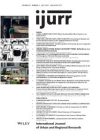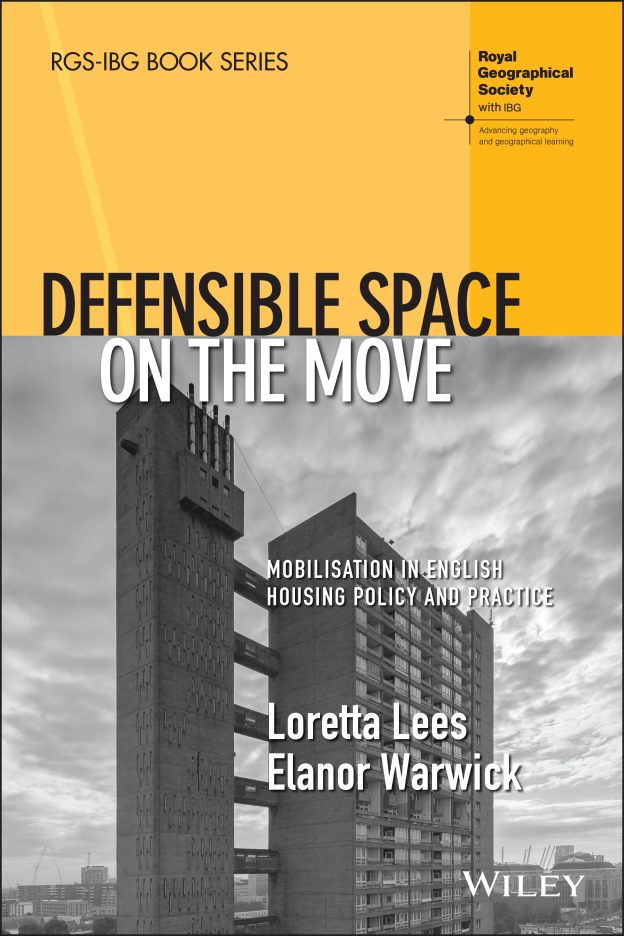Ancient military commanders understood the advantage of hilltop encampments over valleys. Medieval kings understood that high walls and moats were effective in protecting them from harm done by outsiders. That both natural and human-made environments affect the safety of inhabitants has been known for centuries and has been deliberately utilized to protect people and property. While modern-day designers and planners implicitly understood the basics of ‘defensible space’, it was not until the 1970s that the concept was coined and popularized. Loretta Lees, an urban geographer, and Elanor Warwick, an architect and urban designer, have written a volume of interest to geographers, designers, urban planners, architects, criminologists, urban sociologists, political scientists, environmental psychologists, housing practitioners and policymakers.
The authors trace the history of defensible space from the 1970s work of Oscar Newman on New York City public housing projects to Alice Coleman’s work in English boroughs and estates. The authors use oral histories and in-depth interviews with key figures alongside extensive archival research to examine the movement/mobility/mobilization of defensible space across the Atlantic as well as across, in and through academic, professional and governmental circles in the UK. The primary focus is on the period from the 1970s to the 1990s, but more recent developments are also examined.
Lees and Warwick make a convincing argument that the very definition and popularity of the concept—its placement in policy, its application in the design of estates, and even its importance in evaluations—are political processes. The acceptance or rejection of defensible space is affected by the prevailing political ideology, different (and sometimes conflicting) professional and disciplinary orientations, organizational structures, and individual entrepreneurship, personality and efficacy. For example, the importance of the political and the personal were both on display when Coleman was starting out, with her direct appeal to Prime Minister Margaret Thatcher. Coleman’s approach to estate housing fitted well with Thatcher’s ideology, the drive to privatization, and the ‘right-to-buy’ policy. During a meeting with Thatcher, Coleman deliberately appealed to the Prime Minister’s own scientific background by referencing large amounts of data and ‘fact’ on the efficacy of defensible space. She secured 50 million pounds to implement her plans.
Lees and Warwick note the key role of women in the transfer of defensible space policy from America. Alice Coleman’s Utopia on Trial (1985) ignited the movement in the UK and she continued to be a major force in policy, practice and evaluation projects for decades. Sheena Wilson, a psychologist and Home Office researcher, brought Newman’s principles to the attention of a wide policy audience when she examined the role of design on vandalism in estates. Anne Power, a housing activist and community organizer (and later consultant to the Department of the Environment), is also a key actor who was frequently pitted against Coleman in public debates in a manner that highlighted Coleman’s New Right position while presenting Power as a left-liberal. Power rejected the link between design and social problems in estate housing, arguing that social factors such as good management and the inclusion of residents in the process were central to improving life on the estates.
The two authors clearly explain their ideas to the wide range of professionals that the book addresses. They describe and analyze the social science theory and empirical research related to defensible space in terms that planners and design professionals can easily understand. And they carefully describe and explain the redesigned defensible space components of various UK estates to make it easy for more theoretically focused social scientists to visualize and comprehend.
This is a book about defensible space in English housing policy and practice. Hence it is unfair to criticize Lees and Warwick for failing to draw more on the literature of defensible space in the US. Nonetheless, there are several parallels that could be drawn. First, the personalities of the primary proponents—Coleman and Newman—are similar in regard to their assertive, entrepreneurial claims, their aggressiveness toward critics, and their dogged persistence in the face of criticism and obstacles posed by government agents and community groups. Second, as in the UK, Newman’s concept of defensible space and the implementation of defensible space schemes evolved in the US due in part to theoretical criticism and more rigorous evaluations. The authors do not discuss whether Newman’s own admission that he had emphasized the impact of physical changes on behavior and downplayed social factors had any influence on debates in the UK. In essence, did these developments move to the UK as part of the original concept, or did its evolution in England take on a life of its own independent of developments in the United States? Finally, while studies of defensible space in both countries are inconsistent in demonstrating an impact on crime, the concept remains popular and widely used in urban planning in both the UK and the US.
The movement/mobility/mobilization framework is helpful for examining the placement of defensible space in UK housing policy and practice. The authors note the many factors that affect the complexity and messiness of policy transfer: the murkiness or ambiguity of the concept itself, the vocabulary and orientation of the diverse professional groups, the personalities and agenda of the individuals involved, the varied resources available to those groups and individuals, and the ideologies of the political leaders.
Patrick Donnelly, University of Dayton
Loretta Lees and Elanor Warwick 2022: Defensible Space on the Move: Mobilization in English Housing Policy and Practice. Hoboken, NJ: John Wiley and Sons. Cover used with permission of John Wiley and Sons.
Views expressed in this section are independent and do not represent the opinion of the editors.

